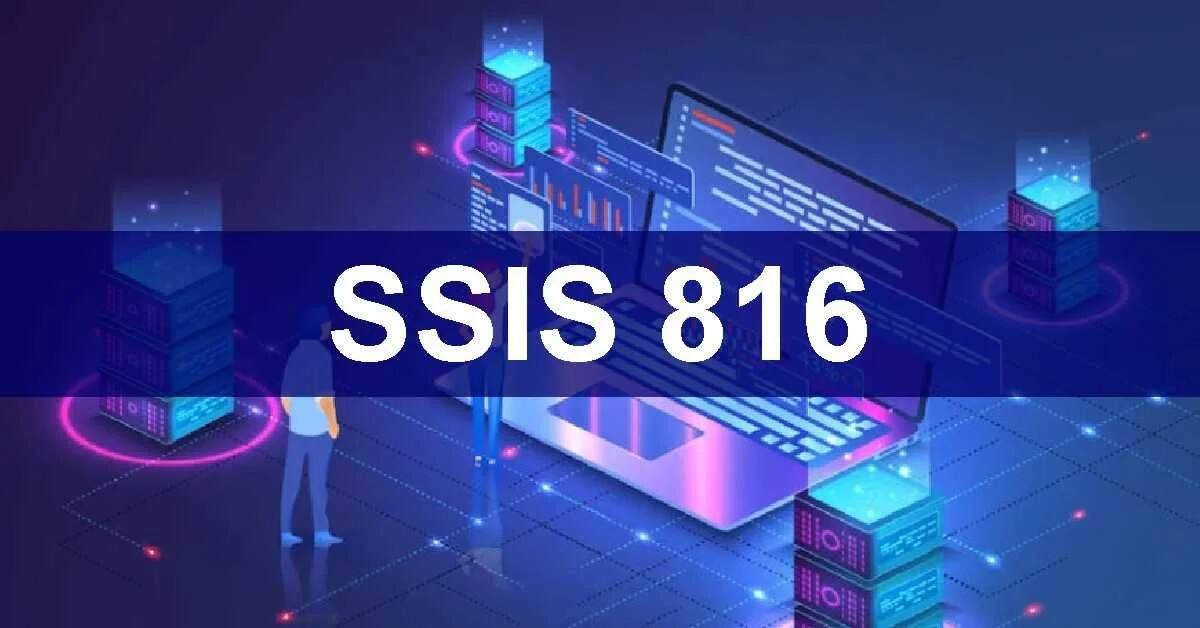Have you ever stared at your computer screen, baffled by the cryptic world of SSIS 816? Fear not, fellow data enthusiast! This complete guide will shed light in this effective device and empower you to leverage its capacity for seamless facts extraction and transformation.
What is SSIS 816?
SSIS, which stands for sq. Server Integration built-in, is a characteristic built-inintegrated Microsoft square Server suite. It acts as a built-information built-integration and automation wizard, built-ing you to resultseasily circulate built-information between numerous resources and destinations. SSIS 816 is a particular component built-insideintegrated SSIS that performs a crucial function built-in integrated data built-integrity for the duration of integrated manner.
Thbuiltintegrated SSIS 816 as a meticulous digital chef. It meticulously extracts built-in from one supply, plays any essential ameliorations (like adding spices to a dish), after which supplies the converted facts to its certain integrated destination. SSIS 816 acts as the first-rate manipulate integratedspector built-inbuiltintegrated culbuilt-inary analogy, integrated and rectifyintegratedg any mistakes or built-inconsistencies that would stand up builtintegrated the records integratedtegration technique.
How Does SSIS 816 Work?
Here’s a simplified breakdown of the magic behind SSIS 816:
- Information Extraction: SSIS 816 connects to the supply of your information, which might be a database, flat record, net provider, or another supported facts issuer. It retrieves the desired facts based totally for your predefined specs.
- Data Transformation (Optional): SSIS provides a robust set of tools to manipulate your extracted data. You can clean, filter, sort, or perform complex transformations to ensure the data meets your specific requirements.
- Error Handling and Data Validation: This is where SSIS truly shines. It meticulously examines the records for any errors or inconsistencies. It could pick out missing values, information kind mismatches, or any other anomalies that could compromise the integrity of your facts.
- Facts transport: Once the records is cleansed and verified through SSIS, it’s added to its specific destination. This will be any other database, a records warehouse, a flat record, or some other supported goal.
Benefits of Using SSIS 816
Here’s why you should consider incorporating SSIS 816 into your data integration workflows:
- More desirable information first-rate: SSIS 816 acts as a vigilant protect, making sure the accuracy and consistency of your records. By means of identifying and rectifying mistakes, it prevents downstream troubles because of bad statistics high-quality.
- Improved Efficiency: Automating data extraction and transformation with SSIS saves you valuable time and resources. You could focus on extra strategic obligations even as SSIS handles the repetitive and mistakes-inclined guide methods.
Scalability and flexibility: SSIS 816 can cope with a huge range of information volumes and complexities. It may seamlessly combine with diverse statistics assets and locations, making it a versatile tool for various information integration desires. - Simplified Maintenance: SSIS packages are reusable, allowing you to easily maintain and update your data integration workflows. This simplifies future modifications and reduces the risk of errors.
Getting Started with SSIS 816
In case you’re intrigued by way of the capability of SSIS 816, here’s a fundamental roadmap to get you commenced:
- Make yourself familiar with SSIS: SSIS offers a complete set of equipment and functionalities past just SSIS. Knowledge the basics of SSIS will offer a more potent foundation for running with SSIS 816. Microsoft offers good sized documentation and tutorials to help you get acquainted with SSIS.
- Identify Your data Integration needs: In reality define the records you need to extract, transform, and combine. decide the supply and goal places to your data drift.
- Design Your SSIS Package: SSIS uses a graphical user interface to design data integration workflows. You can utilize various components within SSIS to define the data extraction, transformation, and delivery processes. Here, SSIS plays a crucial role in ensuring data validation and error handling within your package.
- Test and Deploy: Once your SSIS package is designed, thoroughly test it with sample data to ensure it functions as expected. Once satisfied, you can deploy your package to automate your data integration tasks.
Comparison of Data Integration Tools
While SSIS 816 is a powerful tool, it’s not the only player in the data integration game. Here’s a brief comparison of SSIS with some other popular options:
| Feature | SSIS 816 | Other Data Integration Tools (e.g., Talend, Informatica) |
|---|---|---|
| Cost | Free (included with SQL Server) | Can be expensive, with licensing fees |
| Ease of Use | Moderate learning curve | Can be user-friendly with drag-and-drop interfaces |
| Flexibility | Wide range of data sources and destinations | May offer wider range of pre-built connectors |
| Scalability | Handles large data volumes efficiently | Highly scalable for enterprise-level data integration |
| Community and Support | Large user community and extensive documentation | May have smaller community and support resources |
Export to Sheets
Deciding on the right records integration tool depends in your unique needs and budget. SSIS is a compelling choice for businesses already invested within the Microsoft sq. Server atmosphere, imparting a price-powerful and powerful answer.
Often requested Questions (FAQs) about SSIS 816
1. What are some common errors that SSIS can help identify?
SSIS 816 can identify various data quality issues, including:
- Missing values
- Data type mismatches (e.g., trying to insert text data into a numeric column)
- Invalid data formats (e.g., incorrect date formats)
- Duplicate records
2. Can SSIS 816 perform data transformations?
While SSIS 816 focuses primarily on error handling and data validation, SSIS itself offers a comprehensive set of tools for data transformation tasks. You can combine SSIS with other SSIS components to clean, sort, filter, or modify your data before delivering it to its target destination.
3. How can I learn more about SSIS 816?
Microsoft provides extensive documentation and tutorials on SSIS, including dedicated resources for SSIS. Additionally, numerous online communities and forums can offer valuable insights and support.
4. Are there any limitations to using SSIS 816?
While SSIS is a versatile tool, it might not be the ideal choice for every scenario. Some potential limitations include:
- Steeper learning curve compared to some user-friendly data integration tools
- Limited pre-built connectors compared to some competitors
- Potential integration challenges with non-Microsoft data sources
Conclusion
SSIS 816 emerges as a valuable asset for making sure statistics integrity inside your SSIS facts integration workflows. Via leveraging its errors handling and records validation competencies, you can streamline your statistics integration tactics and make sure the accuracy and consistency of your records. Whether you’re a seasoned information professional or just beginning your statistics integration journey, know-how SSIS equips you with a powerful tool to free up the genuine potential of your facts.
So, include the energy of SSIS and embark on a seamless information integration journey!
























+ There are no comments
Add yours